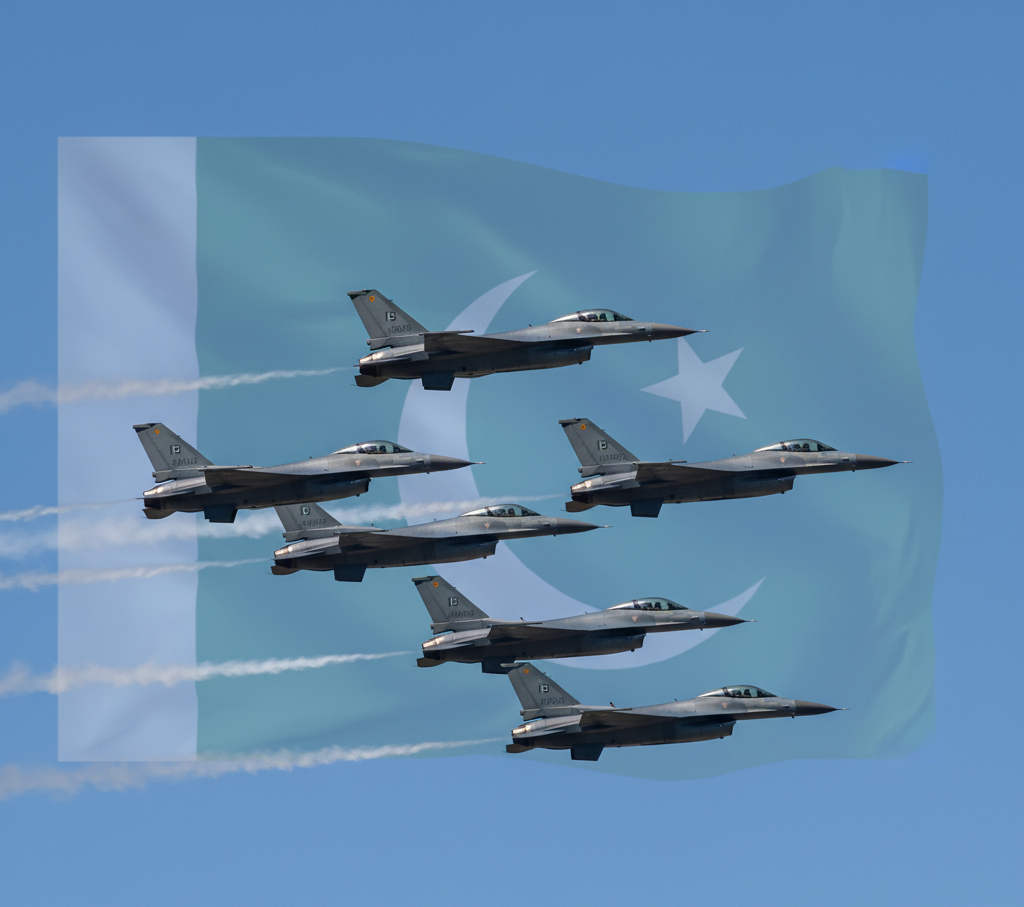Business & Economy
How Many F-16 Fighter Jets Are in Pakistan?

Short answer (as of October 2, 2025)
Public, credible open-source references indicate the Pakistan Air Force (PAF) operates about 75 F-16s in active service, out of roughly 85 acquired over time. This total includes upgraded A/B variants (including ex-Jordan ADF airframes) and newer C/D Block 52+ jets. Wikipedia
Why the numbers vary
You’ll often see slightly different figures because sources tally fleets differently:
- “In service” vs “total acquired.” Some lists show how many airframes were ever delivered (including attrition), while others count only those currently operational. Wikipedia
- Mid-life upgrades and attrition. Older A/B models received MLU (Mid-Life Update), while a small number have been lost to accidents or retired, so today’s operational figure is lower than total acquired. f-16.net
- Source cut-off dates. Annual directories (e.g., FlightGlobal’s World Air Forces) freeze data months before publication; Wikipedia lists often reflect the latest sightings and IISS snapshots. Flight Global+1
The composition of Pakistan’s F-16 fleet (high-level view)
- F-16A/B Block 15 MLU (modernized early-model jets): ~54 combined across single- and twin-seat types (these include earlier A/Bs and ex-Jordan ADF airframes upgraded to a common standard). Wikipedia
- F-16C/D Block 52+ (delivered 2010 era, with CFTs and advanced avionics): 18 (12 C and 6 D). Wikipedia
Those counts roll-up to ≈75 “in service” today, with ≈85 “acquired” historically—i.e., airframes delivered to Pakistan at some point. Wikipedia
How Pakistan got here: a quick timeline
- 1980s: Pakistan received its first F-16A/B Block 15s (initial batch), but later US sanctions over the nuclear program embargoed additional aircraft. Some airframes were built but stored in the US rather than delivered. FAS Project on Government Secrecy+1
- 2000s–2010s: Relations and approvals improved; Pakistan received 12 F-16C and 6 F-16D Block 52+ and also acquired ex-Jordan F-16A/B (ADF) to bolster numbers. Legacy A/Bs underwent MLU to extend service life and enhance avionics and weapons integration. Wikipedia+1
- 2010s–2020s: The PAF continued life-extension and systems upgrades while evolving its overall fighter mix with the JF-17 and J-10CE to complement the F-16 fleet. Medium
Why the F-16 still matters to the PAF
Despite the induction of JF-17 and J-10CE fighters, the F-16 remains a premium multi-role asset in the PAF for several reasons:
- Multi-role flexibility: Air superiority, precision strike, and interception roles with mature sensor/weapons ecosystems.
- Upgradability: MLU and subsequent avionics/weapons updates keep capabilities relevant. f-16.net
- Interoperability and training: Long operational history, established tactics, and deep pilot proficiency.
Major defense surveys and news analyses continue to describe the F-16 as a core component of Pakistan’s air power, even as neighboring India fields Rafale and S-400 air defenses and Pakistan fields newer Chinese types—context that shapes the region’s air balance. Reuters
How fleet counts are compiled (for readers who need methodology)
- Annual directories (e.g., FlightGlobal World Air Forces): snapshot of each air force’s fleet “in service” near the publication date (usually December data for the following year’s directory). For Pakistan, the World Air Forces references align closely with the 70s-plus operational count. Flight Global+1
- IISS The Military Balance: paid reference widely cited for force structure; recent citations reflected in public summaries/lists also show ∼75 F-16s in service. IISS+1
- Platform-specific databases (F-16.net): tail-number-level detail of deliveries, variants, and mishaps helps reconcile attrition vs. inventory. f-16.net+1
- SIPRI arms-transfer data: tracks deliveries (not necessarily current operational status), useful to understand “total acquired” versus “in service.” SIPRI+1
Implications for regional security watchers
- Quality vs. quantity: Pakistan’s ~75 F-16s may be fewer than India’s top-end fighters by count, but capability, integration, and readiness levels keep them strategically significant. Reuters
- Mixed fleet strategy: Pairing F-16s with JF-17 Block III and J-10CE spreads cost and risk while preserving a high-end spear tip for deterrence and quick-reaction alerts. Medium
- Upgrade pathways: While some countries are moving to F-16V (Block 70/72) standards, Pakistan’s trajectory has focused on MLU for legacy jets and complementary acquisitions (JF-17/J-10CE). Public sources do not indicate a confirmed F-16V upgrade for PAF at this time. (Inference from absence in authoritative reporting; contrast with Polish F-16V path.) IISS+1
Editorial note on data certainty
Because national fleets are dynamic (accidents, overhauls, upgrades, and policy changes), exact numbers can shift. However, triangulating FlightGlobal, IISS, and platform-level sources keeps the ≈75 operational figure robust for late-2025 reporting. Flight Global+2IISS+2
FAQs (10)
1) How many F-16s does Pakistan have in service right now?
Most recent public tallies converge on about 75 operational F-16s, with roughly 85 acquired over the program’s lifetime. The gap reflects attrition and retirements. Wikipedia
2) What F-16 variants does the PAF operate?
Primarily F-16A/B Block 15 (upgraded to MLU), ex-Jordan ADF airframes brought to a common standard, and F-16C/D Block 52+ with conformal fuel tanks and advanced avionics. Wikipedia
3) When did Pakistan start flying the F-16?
The first F-16s entered PAF service in the early 1980s (Block 15). f-16.net
4) Why were some F-16s embargoed in the 1990s?
US sanctions related to Pakistan’s nuclear program halted deliveries; certain aircraft were built but stored in the US rather than handed over until later policy changes. FAS Project on Government Secrecy
5) What upgrades have Pakistan’s F-16s received?
MLU packages on A/B jets improved avionics, sensors, and weapons compatibility; Block 52+ jets arrived with more modern systems. f-16.net
6) Are Pakistan’s F-16s the PAF’s most advanced fighters?
They remain among the most capable, complemented by JF-17 Block III and J-10CE for depth. The mix is designed to cover air defense, strike, and deterrence roles. Medium
7) Why do different websites show different F-16 counts?
Cut-off dates, definitions (“in service” vs “acquired”), and how each source handles attrition/upgrades create small discrepancies. Using multiple reputable references yields the best estimate. Flight Global+1
8) Has Pakistan considered F-16V (Block 70/72) upgrades?
There’s no widely reported, confirmed PAF F-16V upgrade program in authoritative open sources; comparisons in the region reference other nations’ upgrades instead. (Inference from major references lacking PAF-specific V-upgrade confirmation.) IISS+1
9) How reliable are open-source fleet numbers?
Very good for ballpark accuracy—especially when IISS, FlightGlobal, and platform databases align—but they’re still estimates due to classified readiness states and rolling maintenance. Flight Global+1
10) What’s the broader context of Pakistan’s fighter fleet today?
Alongside F-16s, Pakistan fields JF-17 (domestic/Chinese joint program) and J-10CE (Chinese), reshaping force structure while phasing out older Mirages—trends highlighted in recent defense analyses. Medium+1
Bottom line for readers
For defense watchers and aviation enthusiasts: Pakistan’s F-16 fleet remains ~75 strong in active service, anchored by upgraded A/B MLUs and C/D Block 52+ jets. Numbers can fluctuate with maintenance cycles, attrition, and future policy decisions, but triangulated open-source data keeps this estimate reliable for late-2025 reporting. Wikipedia+2Flight Global+2








